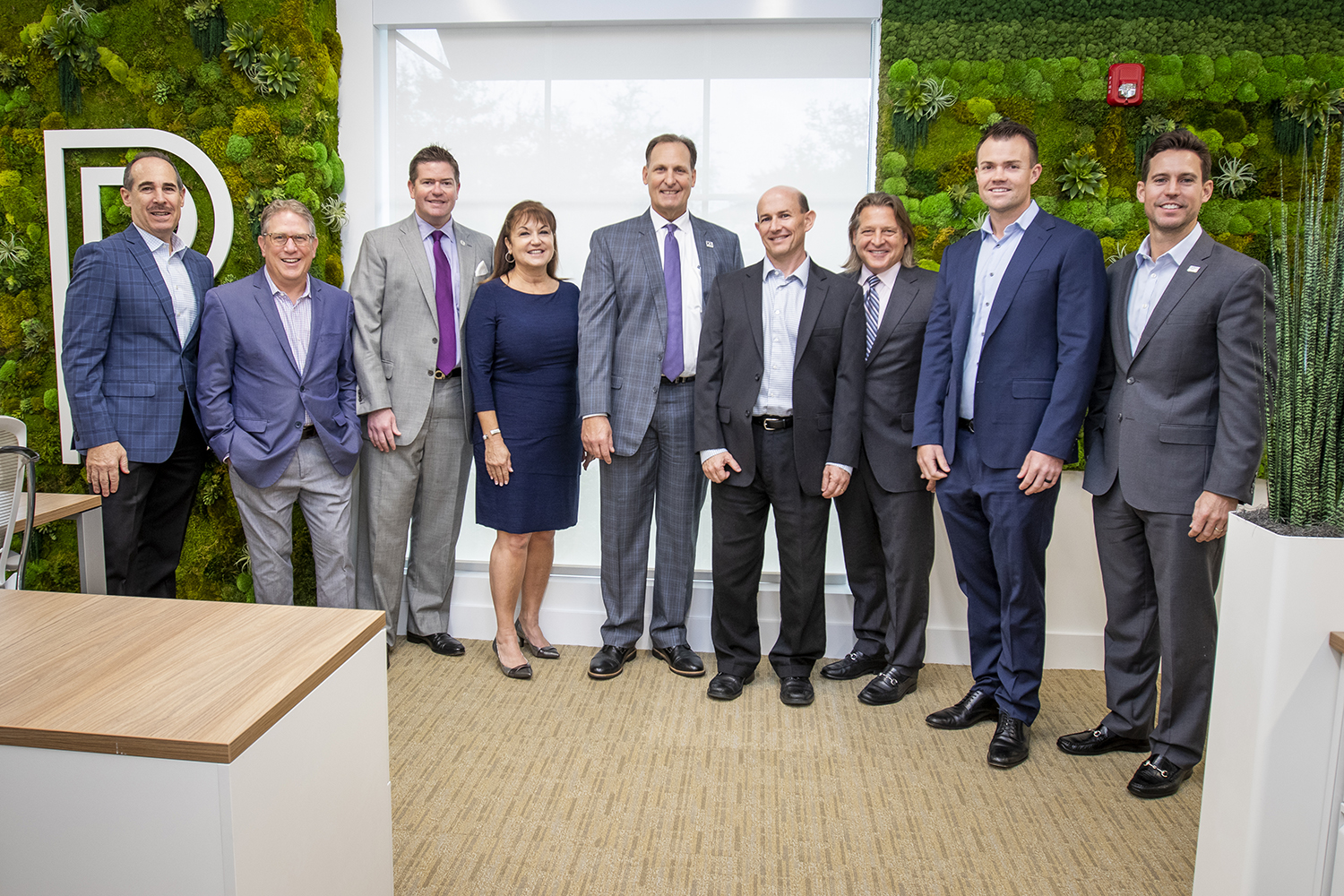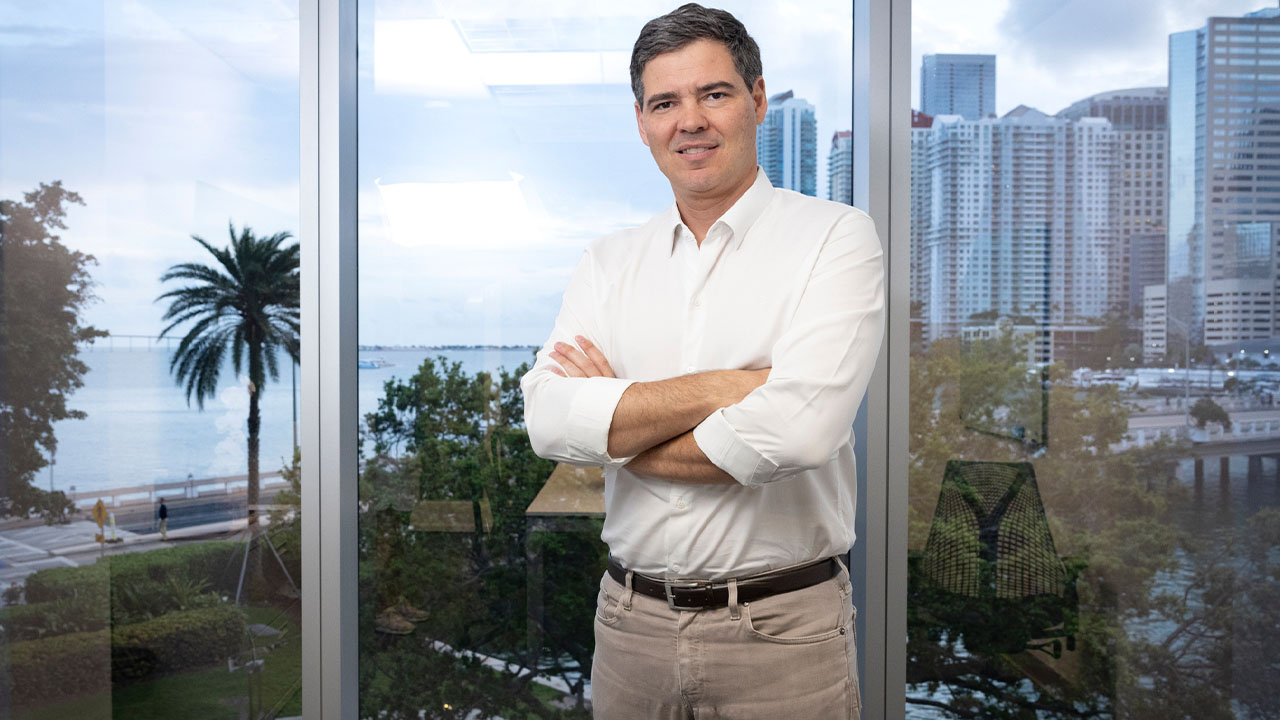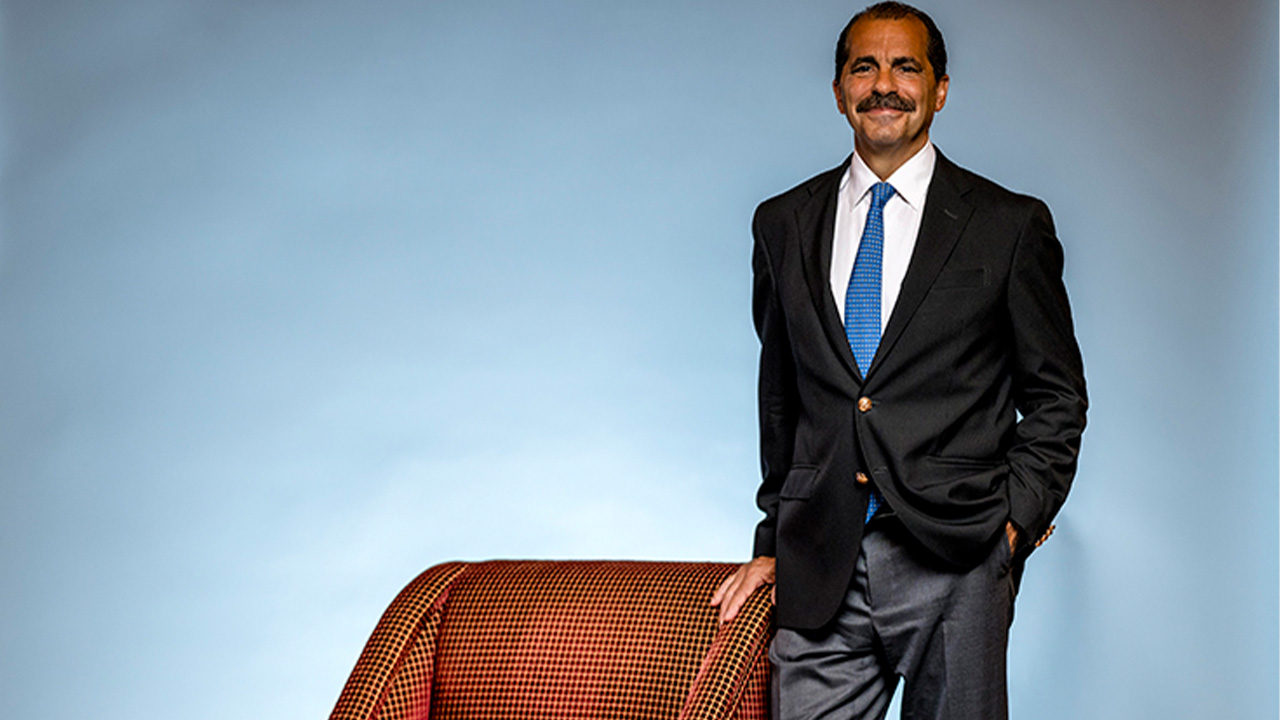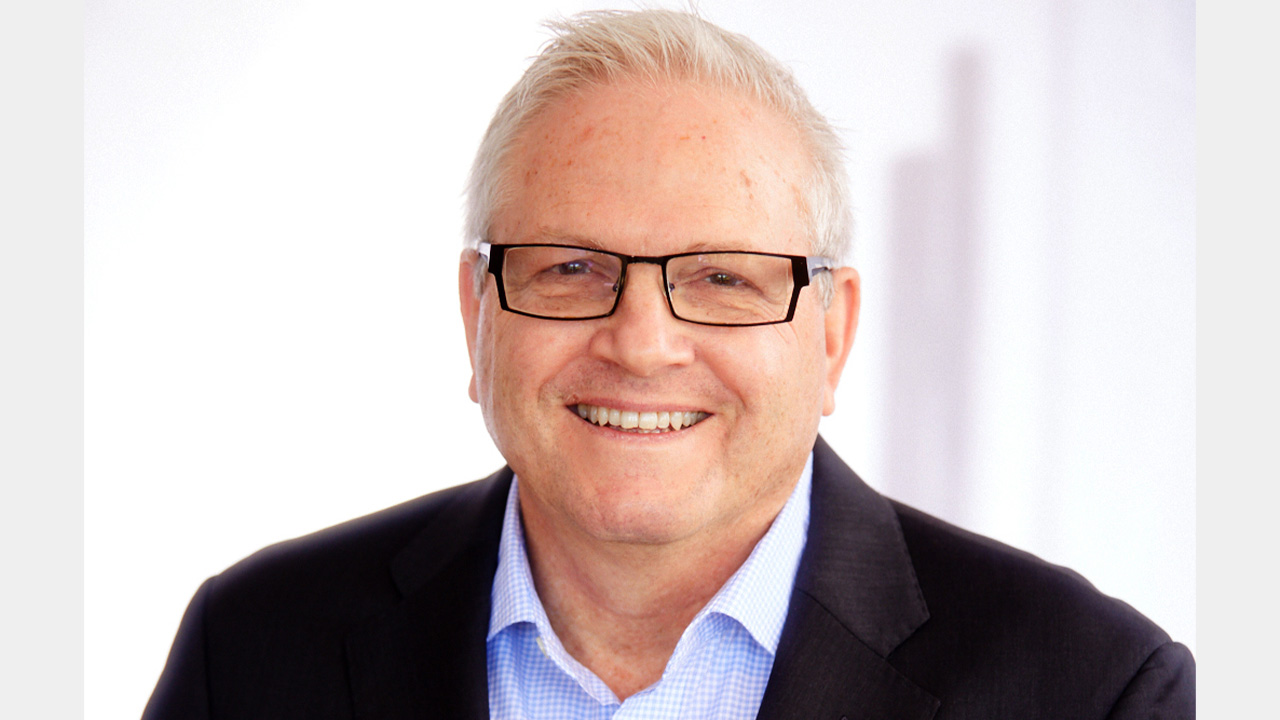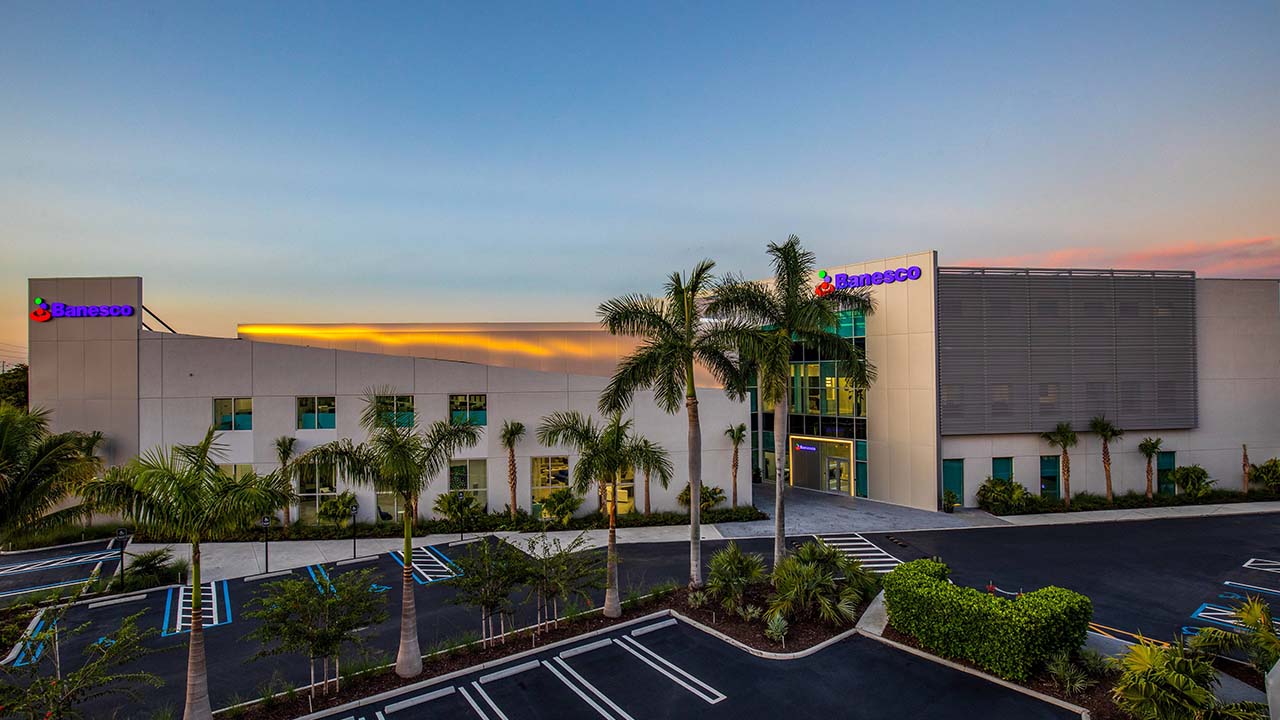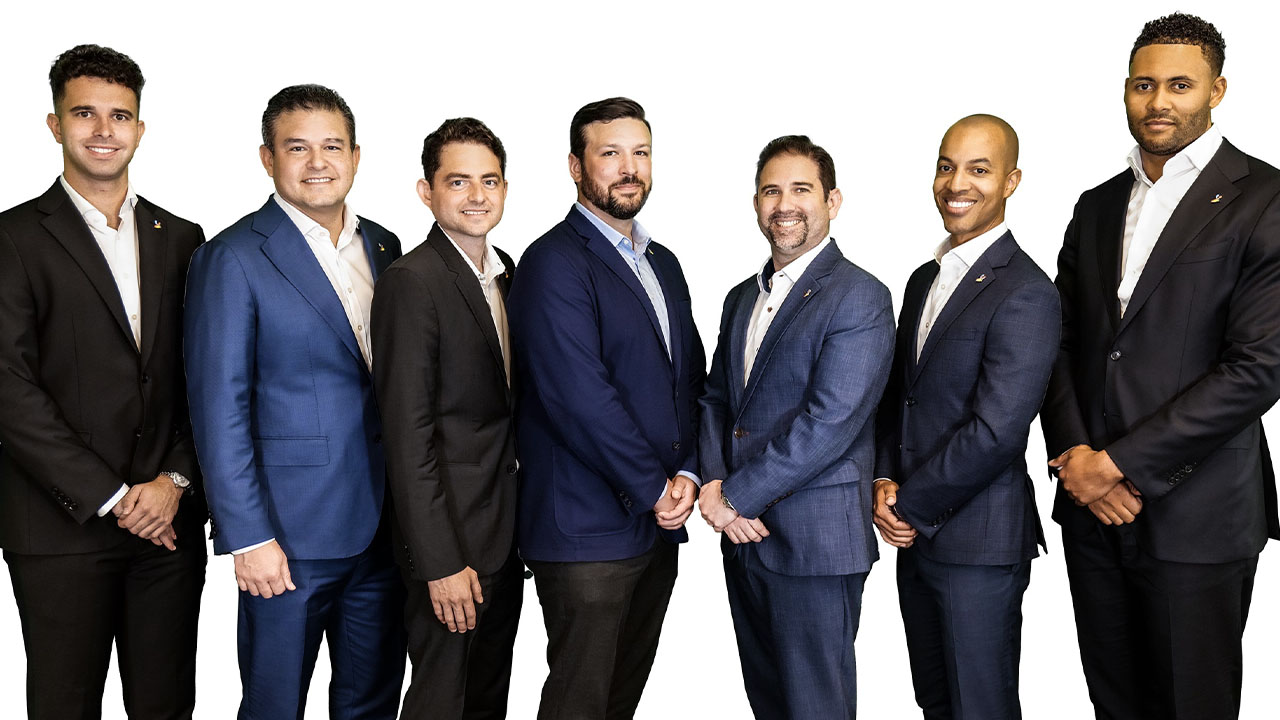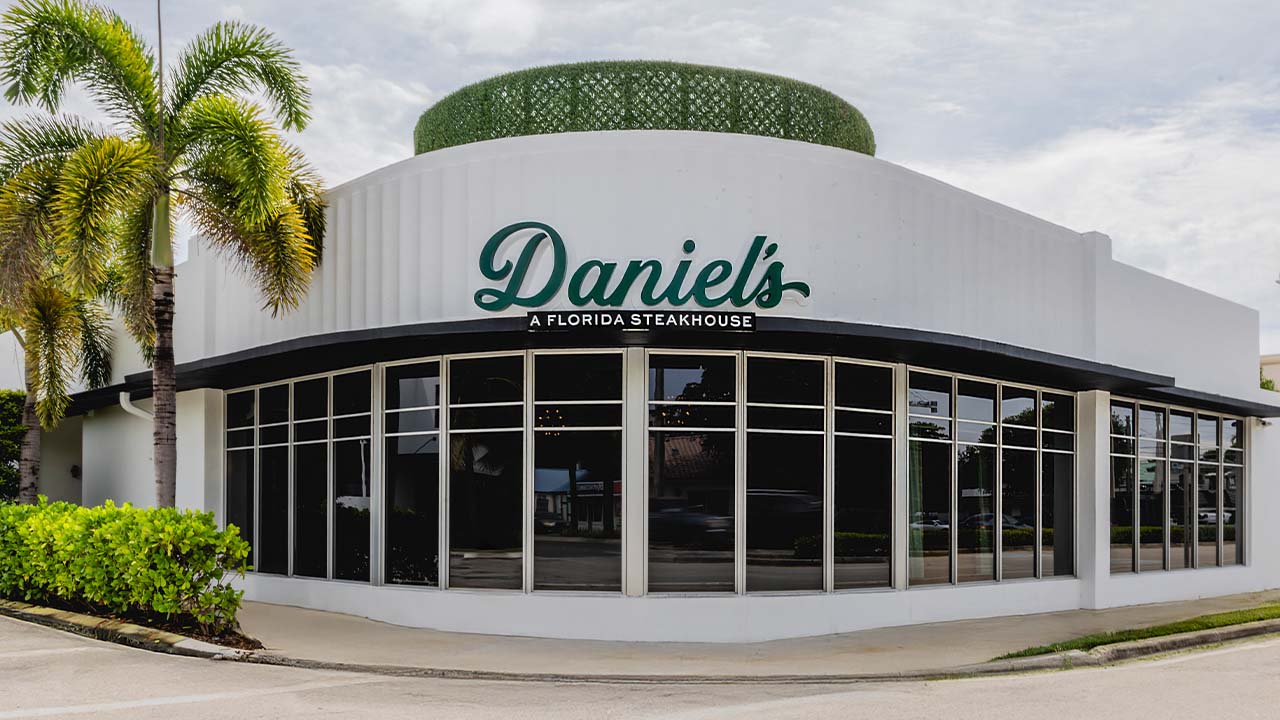[vc_row css_animation=”” row_type=”row” use_row_as_full_screen_section=”no” type=”full_width” angled_section=”no” text_align=”left” background_image_as_pattern=”without_pattern”][vc_column width=”2/3″][vc_column_text]
Sponsored By

A panel of chief financial officers assembled by SFBW talked about the growing importance of their roles and a generally positive view about the economy for 2020.
The panelists:
• Seth Asofsky, a principal with Nperspective, which provides part-time, interim and project CFO and strategic management services.
• Donna Corredera, who joined Image Skincare International as CFO in 2014 and was previously a CFO, consultant and financial executive at companies including Spectrum Brands and Fresh Del Monte Produce.
• Alex Gulick, who has been CFO with Procacci Development since 2012 and previously wa a senior asset management accountant at Ernst & Young.
• Doug Simms, who has been Kaufman Lynn Construction’s CFO since 2014 and has nearly 30 years of accounting and financial management experience, including 20 years in the construction industry.
• Joseph Ziegler, who has a background as a CFO at pharmaceutical companies and, in 2018, joined Encompass, which provides customers with maintenance and other property solutions.
Captains of strategy
Panelists were asked their perspective on a quote from Henner Schliebs, global vice president of SAP’s ERP and Finance Solutions. He told Digitalist magazine, “The CFO’s role will evolve from strategist to captain. CFOs have already reached the next level, in that they are commonly accepted and poised to lead the company’s strategy.”
Ziegler: As I think about the CFO role, I think of this really as being the quarterback for the company. I don’t know if this is really leading the strategy, but being a key member of the team. The strategy really comes from the CEO in combination with sales and marketing. To me, our main job is to make all the pieces come together—to make sure we have all the resources that we need to execute against that strategy. Because, even if you have a great idea, if you don’t have the financial resources—say, from your banks or the internal working capital—to support that, you won’t be able to fully execute against the vision that you came up with your team.
Gulick: It’s an interesting perspective, because we’re a privately held company or smaller, and I consider us more nimble. Our strategy is constantly evolving. As a CFO, the metric that we use, is called the POM, so that’s the “pile of money” out there. How do you monitor the POM for every business segment and every opportunity that we pursue and that’s constantly evolving as the markets are changing and as economics are evolving. So, I’m constantly monitoring that analytic of how we are using our resources, and are we using them efficiently, and how do we continue that towards the CEO’s strategy?
Simms: I’ll echo what Alex was saying a little bit. The ability to have clarity and what’s going to happen in the future, we refer to it as trying to see around corners. Our business is built on a year and a half or two years of backlog. So, we need to be able to see what’s going to be happening in that timeframe to be able to replace that backlog or we’re going to go out of business. We’re constantly looking for what’s that new thing in the market, what’s going to be hot as [condominiums] and multifamily [housing units].
Asofsky: I was a banker for many years and became a CFO and grew it into a global business, raised private equity, public equity, and, of late, have been doing what we call part-time or fractional CFO services. We moved it down to Florida, where we work with emerging and mid-market companies, so I’m acting as CFO for four or five companies, I’ve got 15 partners around the state in Orlando, Tampa and South Florida. So, we’re providing to a fairly diversified base of clients. A CFO service, by the very definition of what we’re doing, [is] coming in and providing an advisory role to an owner or CEO. Oftentimes a CEO or an owner, they’ve got a vision, they’ve got a strategy, they’re trying to execute it, but they’re bumping up to some type of an issue. As a CFO, we will come in and try to help them execute that, whether it’s helping them raise capital, with helping them get their financial positioning, so they can get bank debt. In some cases, they want to sell the business. In our case, it’s just a matter of being able to have the capacity and the infrastructure to be scalable and grow. I think the CFO role oftentimes somewhat blurs with the CEO.
Corredera: I would say definitely the CFO has a seat at the table when it comes to strategy, and captaining depends on the company size and organizational structure. But a CFO knows where the funding comes from, also has deep operational knowledge about what the company’s capabilities are, both in terms of capacity, skill sets and the competing priorities that a company has, at any given moment, and the timeline of what will be executed. There’s a lot of partnering with a CEO, with a board and with equity investors as to what the strategies are, but CFOs always have a seat at the table and more so taking a leadership position in terms of spearheading maybe some of the functional aspects of a strategy, doing the ROI analysis, or also just the planning around it.
Asofsky: I once had someone tell me, there’s two different types of CFOs. There’s the reporting CFO, they kind of report the news, and then there’s the more strategic CFO that helps make the news. Now, the expectation is being a strategic CEO.
Economic Outlook:
What’s your outlook for the U.S., global and Florida economies as we head into 2020?
Asofsky: In the back of my mind, I’ve been seeing improvement. Last week, I was in a meeting in New York and coming back, I watched the movie, The Big Short. That was filmed in 2015, but it’s about 2008. You watch it and you say, “Oh, gosh, there’s a lot of analogous kind of things going on in that movie to where we are right now.” When you go around and talk to people in private equity down here or you talk with clients and what we do, everything seems to be going very well and people certainly seem very positive. But, we’re at the historically far end of an economic expansion and it’s kind of like gravity. We’re going to have a slowdown at some point in time. The question is, when is that going to happen? We keep pushing against that, which is the challenge, because I’m already at a point where I thought we would be feeling something and we, certainly in this market, don’t seem to be seeing obvious signs of it happen.
Simms: That’s the first point. Exactly. We follow economists that have said for the last five years that we are going to have a recession in some form. Most of the guys that we follow have said that was going to be a short, shallow recession. We just haven’t seen it yet. So, some people were theorizing—and I’ve kind of fallen in that boat—that what if it already happened and we just didn’t realize it? What if we’re not in the eighth inning of the game, but we’re in the second inning of the new game? We could go another 10 years like this. That’s what I think we’re all hoping.
Asofsky: There are things happening on the international marketplace, in places like the U.K., Germany, Mexico and Brazil. They’re now moving into more recessionary situations and that’s always where this starts to happen. I think that you’d be well-served to kind of follow what’s happening in those foreign markets, because that’s always the first sign. I do think the stock market is in a bit of a bubble territory. I’m thinking back to The Big Short kind of analogy, but things continue to do well. The domestic economic data is good. The unemployment rates are extraordinary.
I was just with someone yesterday who is in the kitchen cabinet business. That’s where the rubber hits the road, with people renovating houses. He’s having a banner year and his top line is doing phenomenal. His problem is the Trump tariffs are crushing him. His profitability is now being squeezed pretty significantly. He’s having to look at alternative ideas about how to source what he is doing. There’s a great example of the economy doing great, but there are things happening that are impacting underlying profitability.
Ziegler: We’re spending time with our customers, largely health care and education, and they’re all generally optimistic about the economy and just have some concerns with the elections coming up—what that means for reimbursement rates and things like that. From an education perspective, all of the private schools that we work with here in South Florida continue to just grow by record numbers. The construction companies that we work with are estimating some type of a decline as they move into 2020, but it’s still strong relative to historic levels. As we look at our business, we continuing to invest in our team, in our in our technology and really just focusing on building a nimble structure so if and when there is a change, we can adjust accordingly to that. As we look at 2020, we’re really excited about the growth opportunities that we have.
Gulick: I’m positive on our U.S. economy. I think the economic indicators are definitely strong with the unemployment rates stable and inflation’s been consistent. My only hesitancy is if I think we are in the 11th inning of a nine-inning game. But baseball games can go quite long. So, I do believe if there is an economic downturn, it would be very short lived and everyone would get up the next day and play the next game. In Florida specifically, I’m kind of bullish. I’m a born [and] raised Floridian, and I’ve seen Florida change a lot and I think still with having no state income tax, with the incentives that our economic development boards offer to companies coming in, our office business is continuing to grow. We’re seeing new office product developed. New businesses are coming down, which is helping keep unemployment so low. These companies are continuing to grow and expand their space, increasing rental rates, so that’s very positive for Florida. Then there’s some big public projects in the works like the $5 billion expansion at Miami International Airport. That’s huge. Fort Lauderdale/Hollywood International Airport is still going through transformation. Brightline is providing a means for transportation and it’s going to connect all of Florida from Miami to West Palm to Orlando and that’s critical with our population continuing to grow and people wanting to travel throughout the state. I’m bullish on Florida in general.
Osofsky: With the population getting older, more people are going to be coming down to Florida. To me, anything kind of related to construction, even residential construction or a service-oriented type business, certainly health care, is very, very solidly placed in South Florida.
Corredera: We’re seeing the growth all over the place. We’re diversified enough if a single country has an economic issue. Overall, many of the countries are very strong and the majority of our countries are growing year over year with skincare. We’re feeling the strength globally. We’re cautiously optimistic about the U.S. economy, I think there’s a certain amount of fragility that’s there and I’m not sure what could tip it, but it’s going OK. With Florida, I agree we’re a net importer, of people and businesses, and I think that is probably a little stronger than the U.S.
Optimism about
their businesses
What’s the outlook for your business in particular for next year?
Corredera: We’re in the beauty and skincare business, helping people to age later. There seems to be a lot of excitement around that, and it’s a high-growth industry. People are focused on maintaining their health and are learning about ingredients. They’re looking for nonsurgical ways of staying young. Millennials are very interested in preventing skincare issues. The more that people are educated about ingredients, of what’s important for them, particularly with respect to sun care, and the risks with sun damage, there’s a big interest in prevention. Education about skin and what’s happening with skin is driving a lot of the need and also affordability.
Simms: We’re seeing less [kindergarten through 12th grade] construction. I think that’s due to fewer younger families and I think it’s more geared toward when they passed the federal law that when you retire, you have to move to Florida. [Panelists laugh.] We’re getting a lot more an influx of older Americans and we see that changing in the demand for senior living facilities, assisted living facilities. We just are probably three months into a $100 million project on the west coast of Florida and they were waiting to see how sales went and if they’re going to do the second hundred million dollar phase. We are 20 percent into it, and they’ve already released us on the on the second phase.
Asofsky: When I go, for example, to downtown Fort Lauderdale, it’s just cranes everywhere. I was having a conversation with someone who lives in downtown Fort Lauderdale and their comment was, You’re starting to hear the first six months are free, and the first 12 months are discounted. These are very high-end buildings that are being built. I think it’s going to be interesting where on the higher end where they’re building, particularly in downtown Fort Lauderdale, but true also in West Palm Beach and Miami as well, whether that’s where you start seeing the issue on the margin.
What are you seeing in terms of the continued growth of entrepreneurial companies?
Asofsky: I’ve seen absolutely no pullback of private equity capital into growth companies and technology companies. That seems to be going full-blown. If you’ve got technology that is on the margin disruptive, there’s lots of money out there. On the more-what-I-would-characterize-as-kind-of-mid-market-type companies that are providing local products or services, my sense is that the banks are still very much in business and are lending money and want to put money to work into lending money. So, capital continue continues to be out there and very supportive of the business community. ♦
[/vc_column_text][/vc_column][vc_column width=”1/3″][vc_gallery interval=”3″ images=”38388,38387,38386,38385,38384,38382,38381,38380″ show_image_description=”yes”][/vc_column][/vc_row]



